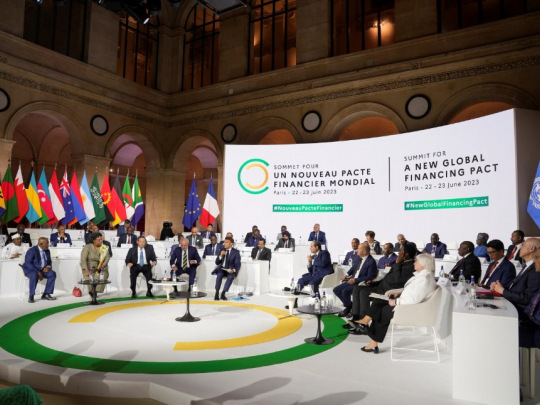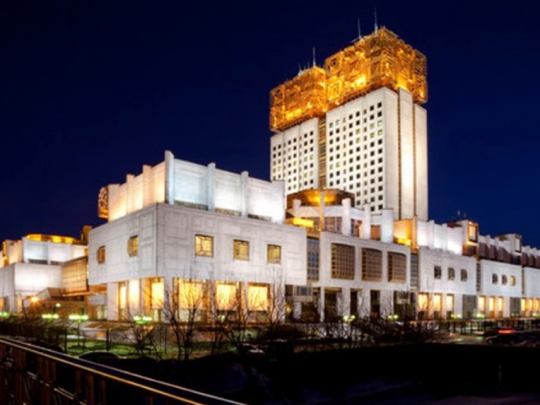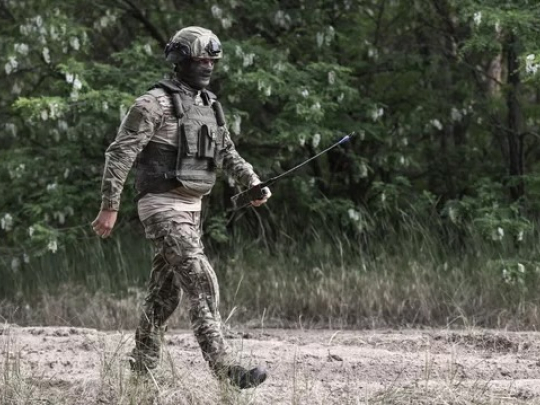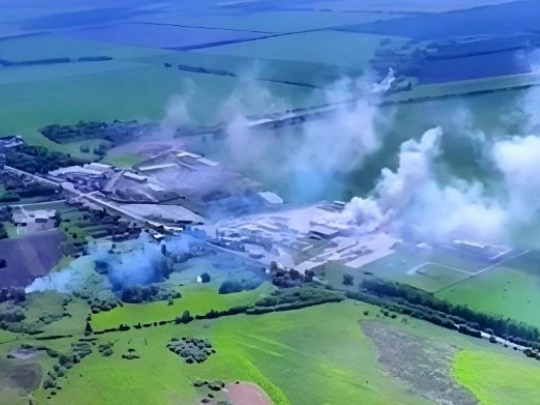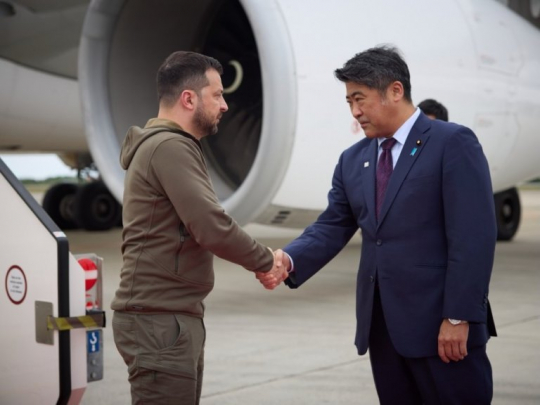Here’s Pentagon’s Version Of Ukraine Biolabs
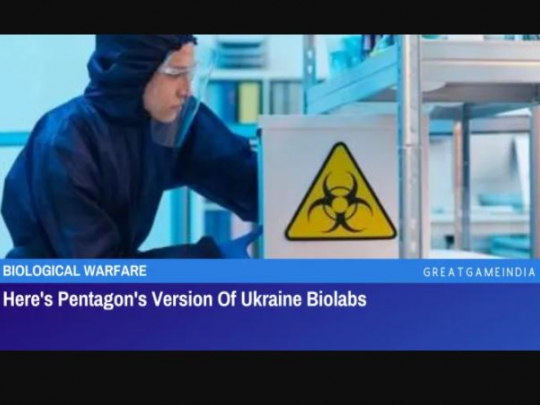
The official narrative around the biolabs is that policymakers in the United States became concerned about the possibility of terrorists stealing biological materials. Here we take a full look into Pentagon’s version of Ukraine biolabs.
Barack Obama, then new senator from Illinois, was driven to a site in Ukraine where the US assisted researchers were dealing with hazardous biological materials during his first official tour abroad. Rather than making weapons, US authorities in that derelict facility were attempting to avoid lethal pathogens from slipping into terrorists’ hands, according to the Wall Street Journal.
Andrew Weber, the Pentagon official in control of the US-funded project that collaborated with the Ukrainian government, says, “I removed a tray of glass vials containing Bacillus anthracis, which is the bacterium that causes anthrax.” Mr. Weber said he showed the tray “to a very concerned-looking young senator.”
Mr. Obama recounted witnessing “test tubes filled with anthrax and the plague lying virtually unlocked and unguarded” on a 2005 trip to Ukraine.
In the aftermath of Russia’s military operation in Ukraine, a decades-old Pentagon initiative that was intended to guarantee bioweapons across the former Soviet Union—and to establish faith among Washington and Moscow after the Cold War—has alternatively now become new point of conflict in an information battle between the two nations.
The Pentagon has been charged by Moscow of financing bioweapons research at Ukraine’s biological labs. Russian Foreign Minister Sergei Lavrov stated earlier this month, “These were not peaceful experiments.”
Those claims have been reiterated by China, whose leader Xi Jinping has built a close connection with Russian President Vladimir Putin. “Russia has found during its military operations that the U.S. uses these facilities to conduct bio-military plans,” a representative for the Chinese Foreign Ministry told journalists.
Officials from the United States have categorically disputed the assertions, warning that Moscow might use them to legitimize its own use of WMD in Ukraine.
“They’re outrageous claims,” said Robert Pope, the chief of the Pentagon’s Defense Threat Reduction Agency, or DTRA, which oversees the program. “We were created 30 years ago to eliminate weapons of mass destruction, and Russia knows well we eliminate weapons of mass destruction.”
The program, which began in 1991 and is still ongoing today, spans the former Soviet Union. According to a DTRA spokeswoman, the Pentagon has invested roughly $12 billion on attempting to secure content used in weapons of mass destruction in post-Soviet republics since the program’s inception.
Since 2005, approximately $200 million of these funds have been invested on biological research in Ukraine. As per the DTRA spokeswoman, the funds have assisted dozens of labs, health facilities, and diagnostic sites across the country.
Mr. Weber, who had been in control of attempting to negotiate the initial deal with Kyiv to work on securing the country’s biological materials and facilities, stated that work expanded to Ukraine following the 9/11 attacks, in which al Qaeda terrorists hijacked planes and plummeted them into the World Trade Center towers and the Pentagon.
Policymakers in the United States became concerned about the possibility of terrorists stealing biological materials, anxieties that were exacerbated after anthrax-laced letters were transmitted through the post to congressional offices and news organizations in the United States. The FBI subsequently determined that the letters were sent by an American scientist working at a military lab.
Worried about the possibility of extremism in his own nation, Ukraine’s president at the time, Leonid Kuchma, sought assistance from the United States. Ukraine has been deprived of the cash it required to safeguard its biological facilities since the demise of the Soviet Union a decade before.
Mr. Weber assembled a team to tour Ukraine’s biological and chemical facilities, which included everything from huge laboratories to small veterinary research institutes. “We found that a number of them had dangerous pathogen collections left over from Soviet days,” he said. “They were in pretty bad shape.”
Unlike several other former Soviet countries, Ukraine’s labs were not actively engaged in the Cold War biological-weapons program, but they did contain viruses that fueled offensive work, according to Mr. Weber.
Those diseases, such as anthrax, could constitute a threat if accidently or intentionally unleashed. The United States’ work in Ukraine centered on consolidating biological material, much of it linked to agriculture, into secure facilities that the US would pay to develop or upgrade.
Paul McNelly, who oversaw the US chemical and biological weapons eradication efforts in Russia, Kazakhstan, and Uzbekistan from 1995 to 2003, said what he witnessed inside the former Soviet sites astounded him.
“You would walk into these places and the refrigerators that stored these dangerous pathogens, they had no locks on them at all,” Mr. McNelly said. “There would be vials that were labeled tularemia, plague, different things like that. And these people, most of them, weren’t masked. Their gowns were antiquated. It was horrible.”
The Pentagon committed $1 billion to create a facility in Shchuchye, Siberia, for the Russians to demilitarize two million chemical weapons as part of the operation. By the time it was completed in 2009, relations with Moscow had deteriorated. Oil prices were rising, providing Russia with more income to disentangle itself off foreign aid.
As a result, according to James Tegnelia, who led DTRA from 2005 to 2009, the Russian government had become a less eager collaborator in the Pentagon’s effort to get the deadly materials. Mr. Tegnelia explained, “They wanted our money, but they didn’t want to admit that we built the facility,” Mr. Tegnelia said. “You could see that they were getting ready to pull back.”
The program has previously been commended by Russia’s Foreign Ministry. Moscow, however, declined to extend collaboration in 2012, claiming that it could compensate for the construction by itself.
- Source : GreatGameIndia






